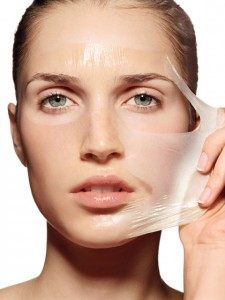
Peels and exfoliation is important to keep a glowing skin, they assist in removing the dead skin cells which will enable your beauty products to work effectively. One of the most important things to take note of though is not to “Scrub” to exfoliate just gently massage in a circular motion and let the product do the work for you. Ideal also for removing blackheads and whiteheads plus to refine open pores. Don’t stop on just doing your face your entire body needs exfoliation – including your hands so give yourself a regular treat. We have 9 things you need to know about peels which are a step up from exfoliate products.
9 Things You Need To Know About Peels
Before You Do One
Don’t let the term “peel” scare you. These chemical exfoliants gently resurface your skin to treat acne, fine lines, uneven pigmentation and more. Here’s what you need to know.
1. Know the main issue you want to treat.
Peels can treat a wide range of skin issues—brown spots, acne, rough texture, fine lines, clogged pores—but focusing on one specific problem can help narrow down the right peel for you, says Kate Holcomb, MD, a clinical assistant professor of dermatology at Tulane University School of Medicine in New Orleans.Renee Rouleau, a celebrity aesthetician based in Dallas, Texas, breaks down peels into two categories: preventative and reparative. “For the most part reparative treats discoloration, acne or clogged pres,” she explains, “while preventative peels focus on jumpstarting cell turnover and rejuvenation.” Either way, your skin looks fresher, smoother and brighter after a treatment.
Plus, peels can actually help treat dry skin. When dry skin builds up on the surface, the dead cells create a barrier that prevents moisturizers from penetrating. A peel helps remove those dead surface cells, Rouleau explains, so hydrating ingredients can do their work.
“Peels can also be customized and layered to deliver the best results for your skin type,” says Dendy Engleman a NYC dermatologist and director of dermatologic surgery at New York Medical College. So peels are not one-size-treats-all.
2. A combination of acids is the most effective.
Several different acids can be used in a peel, but they work in different ways and may be more effective when combined. Peels most often contain one or more of the following: salicylic acid, lactic acid, glycolic acid, Dr. Engleman explains. She’s a fan of the new SkinCeuticals Advanced Corrective Peel because it contains a potent antioxidant that helps the acids penetrate better and work more effectively.
3. You’ll need more than treatment one to see the best results.
“Some peels show a dramatic effect with one treatment, but most people are looking for a ‘no downtime’ procedure, so that takes three to six treatments to see the best outcomes,” Dr. Holcomb says.The reason? Peels are progressive and cumulative, so the results build on each other. With each peel, the ingredients are able to penetrate just the slightest bit further to treat skin concerns.
For points 4 to 9 please visit source below:
Source: http://www.self.com/beauty/skin/2015/10/9-things-you-need-to-know-about-peels/
Please LIKE Voice on Beauty on Facebook so you don’t miss a post … and please share the love with your friends♥

